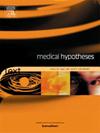Mitigating arterial compliance to diminish migraine risk: A hypothesis
IF 2.1
4区 医学
Q3 MEDICINE, RESEARCH & EXPERIMENTAL
引用次数: 0
Abstract
Migraine is a disabling neurovascular disorder that primarily affects young people and women, despite their generally high arterial compliance. We hypothesize that a reduction in arterial compliance may lower the risk of migraine. This counter – intuitive view is supported by the observation that young people and women, who typically have better vascular compliance, have the highest prevalence of migraine, while diseases associated with reduced compliance, such as diabetes, show a lower incidence of migraine. Using Mendelian randomization with genetic variants related to pulse pressure as a proxy for arterial compliance, our study found that a higher pulse pressure (indicating lower compliance) was associated with a reduced risk of migraine. This is consistent with the mechanisms of current migraine treatments, such as triptans, CGRP inhibitors, and warfarin, which reduce arterial compliance, and vasodilators like nitroglycerin, which can trigger migraines by increasing compliance. If confirmed, this hypothesis could transform our understanding of the pathophysiology of migraine and inspire new treatment strategies targeting arterial compliance. Future research should further explore this relationship through clinical and experimental studies to elucidate the potential mechanisms and applications for migraine prevention and treatment.
减轻动脉顺应性以减少偏头痛风险:一种假设
偏头痛是一种致残性神经血管疾病,主要影响年轻人和女性,尽管他们的动脉顺应性普遍较高。我们假设动脉顺应性的降低可能会降低偏头痛的风险。这一反直觉的观点得到了以下观察结果的支持:通常血管顺应性较好的年轻人和女性偏头痛患病率最高,而与血管顺应性降低相关的疾病,如糖尿病,偏头痛发病率较低。使用孟德尔随机化与脉压相关的基因变异作为动脉顺应性的代表,我们的研究发现,较高的脉压(表明较低的顺应性)与偏头痛风险降低相关。这与目前偏头痛治疗的机制一致,如曲坦类药物、CGRP抑制剂和华法林,它们会降低动脉顺应性,而像硝酸甘油这样的血管扩张剂会增加顺应性,从而引发偏头痛。如果得到证实,这一假设将改变我们对偏头痛病理生理学的理解,并激发针对动脉顺应性的新治疗策略。未来的研究应通过临床和实验研究进一步探索这种关系,以阐明偏头痛预防和治疗的潜在机制和应用。
本文章由计算机程序翻译,如有差异,请以英文原文为准。
求助全文
约1分钟内获得全文
求助全文
来源期刊

Medical hypotheses
医学-医学:研究与实验
CiteScore
10.60
自引率
2.10%
发文量
167
审稿时长
60 days
期刊介绍:
Medical Hypotheses is a forum for ideas in medicine and related biomedical sciences. It will publish interesting and important theoretical papers that foster the diversity and debate upon which the scientific process thrives. The Aims and Scope of Medical Hypotheses are no different now from what was proposed by the founder of the journal, the late Dr David Horrobin. In his introduction to the first issue of the Journal, he asks ''what sorts of papers will be published in Medical Hypotheses? and goes on to answer ''Medical Hypotheses will publish papers which describe theories, ideas which have a great deal of observational support and some hypotheses where experimental support is yet fragmentary''. (Horrobin DF, 1975 Ideas in Biomedical Science: Reasons for the foundation of Medical Hypotheses. Medical Hypotheses Volume 1, Issue 1, January-February 1975, Pages 1-2.). Medical Hypotheses was therefore launched, and still exists today, to give novel, radical new ideas and speculations in medicine open-minded consideration, opening the field to radical hypotheses which would be rejected by most conventional journals. Papers in Medical Hypotheses take a standard scientific form in terms of style, structure and referencing. The journal therefore constitutes a bridge between cutting-edge theory and the mainstream of medical and scientific communication, which ideas must eventually enter if they are to be critiqued and tested against observations.
 求助内容:
求助内容: 应助结果提醒方式:
应助结果提醒方式:


